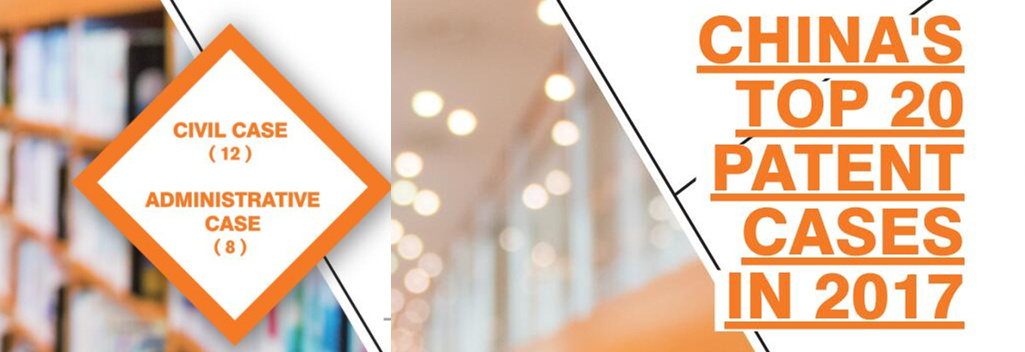

UTILITY MODEL PATENT INFRINGEMENT DISPUTE FOR “ELECTROLYSIS TROUGH ELECTROLYSIS BOARD FIXED MOUNTING COMPONENT”
◆ Second Instance Docket: (2017) Su05MinZhong No. 4612
CASE 11 :
Jiangsu Province
.jpg)
[Headnotes]
The main objective of judicial protection of intellectual properties is to maintain a market environment for “respecting knowledge, revering innovation, and maintaining honesty and law.” A party to technical cooperation during which it learned of the subject matter, uses it dishonestly without permission in its production after patent application was filed, even though before the issuance date, shall be denounced for infringement, and shall be accordingly responsible for civil liabilities.
[Synopsis]
Plaintiff: Jiangsu LvChen Environment Technology Co., Ltd.(LvChen)
Defendant: Jiangsu ShiChuang Environment Technology Development Co., Ltd. (ShiChuang)
LvChen is a tech environmental business specialized in recovering electrolytic copper from industrial effluent. In 2014, ShiChuang and LvChen entered into agreement for cooperation on the micro-etch project of a NanYa Circuit Board (Kun Shan) Co., Ltd., by which LvChen was to provide two complete sets of microetch effluent electrolytic systems, including value, workability, cost, and technology, in the amount of 2.8 million Yuan, the system to be operated and maintained by LvChen. After signing of the agreement, the parties started to work.
On March 2, 2015, LvChen filed a patent application for utility model patent covering “Electrolysis Trough Electrolysis Board Fixed Mounting Component” of the above system. Patent was issued on July 29, 2015.
On June 4, 2015, ShiChuang suddenly called off the agreement, as it copied the LvChen equipment and made one of its own, starting to use it in July 2015. LvChen believed that ShiChuang, with full knowledge of that the equipment was patented, copied it without permission to make huge illegal gains, to the detriment of LvChen. It then filed suit seeking injunction and damages of 1.953 million Yuan. The LvChen patent was issued by the State Intellectual Property Office,which is valid, and legally protected. Upon comparison, the accused device falls within the protective range of the patent. The only dispute is whether the device, being made prior to the date of issuance, but after the date of filing, and being made during the parties’ cooperation, constitutes infringement. The court believes that good faith is a basic principle that everyone should follow in conducting civil activities. This principle is specified in General Provisions and General Principles of the Civil Law, the Law of Contract, and the Law of Anti-Unfair Competition. From the perspective of encouraging innovation and balancing the interest between patentee and the public, either in Supreme Court decisions or in statutory law, the primary condition to noninfringement defense is it is available only to a competitor in society, but one in privity or a partner to whom the technology is disclosed is not included; moreover, defendant must acquire the technology through a lawful channel, by independent research or legitimate means. In this case, when defining the rights of LvChen and ShiChuang, it has to be taken into consideration of ShiChuang’s unique position and its mental condition, and when balancing their interests, the weight shall be placed, not on patentee and the public, instead on protecting the innovator, the honest work, and good faith business operator. ShiChuang, by being exposed to the LvChen equipment and becoming aware of the subject matter of its technology, should have under honesty and good faith principles, maintain the confidentiality and refrain, without consent or permission by LvChen, from disclosing the technology obtained during cooperation to any third parties. ShiChuang claims to have made a machine all by itself on July 22, 2015 for its own business, yet it could not provide any evidence to show where it legitimately got the technology. Accordingly, the court would, with ample reason, believe that ShiChuang obtained the technology from LvChen, which is in clear violation of the good faith principle, and of the basic obligations under contract, and therefore is infringement of the patent.
In the end, the court ordered injunction and assessed damages plus reasonable cost in the amount of 1 million Yuan.
[Judge’s Comment]
This case is a typical example of court providing clear predictability of the law to the public through judicial decisions. The court takes the position of keeping “the main objective of judicial protection of intellectual properties is to maintain a market environment for “respecting knowledge, revering innovation, and maintaining honesty and law.” When a partner, being exposed to the other side’s equipment and technology during cooperation, uses the technology in violation of good faith principle to make a new machine for its business operation, which, despite being done before the issuance date of the utility patent but after the filing date, should be denounced as patent infringement for which civil liabilities must follow.